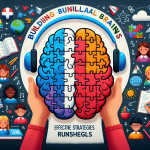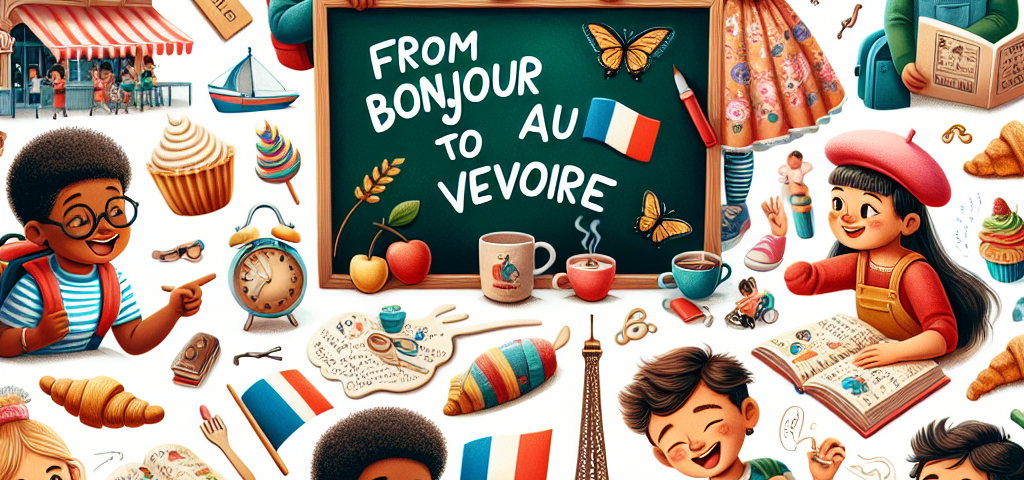
Top Strategies for Succeeding in French Secondary Schools
May 31, 2025
Building Bilingual Brains: Effective Strategies for Primary French Lessons
May 31, 2025
Teaching French to children can be a rewarding and enjoyable journey—both for the instructor and the students. When introduced in a fun and engaging manner, learning a new language ignites a child’s curiosity and nurtures their cognitive development. Here are some creative techniques that can make the French language come alive for young learners.
1. Storytelling with a Twist
Children love stories, and using them as a medium for language instruction can be particularly effective. Incorporate popular French fairy tales or write your own stories that include basic vocabulary and phrases. Enhance these tales with illustrations or puppet shows. For example, while telling the story of "Le Petit Chaperon Rouge" (Little Red Riding Hood), pause to introduce key vocabulary and phrases related to the plot.
Activity:
Have the kids act out the story using French phrases. This not only helps them remember the words but also makes language learning interactive.
2. Incorporating Music and Movement
Music is a universal language, and incorporating French songs into the curriculum can help children pick up pronunciation and vocabulary effortlessly. Choose catchy songs like "Frère Jacques" or "Sur le Pont d’Avignon" to teach basic phrases.
Activity:
Create a dance routine to accompany the songs. Children can learn new vocabulary through movement and rhythm, making the experience memorable and entertaining.
3. Language Through Art
Art projects are another excellent way to teach French vocabulary. Children can engage in activities like painting, drawing, or crafting while learning relevant vocabulary. For instance, while creating a simple collage of different animals, you can teach them their names in French.
Activity:
Host an "Art and French Day" where students create their own art pieces and present them in French. This combines creativity with speaking practice and boosts their confidence.
4. Interactive Games
Games are a fantastic way to engage students while reinforcing learning. Use games like “Simon Says” (which translates to “Jacques a dit”) to practice commands in French. Word searches, bingo, and flashcard matching also provide interactive ways for children to learn vocabulary.
Activity:
Create a language scavenger hunt where children find objects around the classroom or school that correspond with words they’ve learned. This helps reinforce vocabulary in a fun and active manner.
5. Culinary Experiences
Food is an integral part of culture, and incorporating culinary activities can spice up the learning process. Organize a cooking class where children learn to make simple French dishes like crêpes or baguettes while learning the vocabulary associated with cooking and ingredients.
Activity:
Set up a “French Café” where children can practice ordering in French. Decorate the classroom to resemble a Parisian café, encouraging kids to use their new vocabulary in a practical, real-world setting.
6. Cultural Immersion Days
Designate a day to explore different aspects of French culture. This can include French history, fashion, art, and celebrations. Activities might include a French themed movie day with films appropriate for kids or a fashion show where students dress in outfits inspired by French culture.
Activity:
Encourage children to create presentations or posters about a specific aspect of French culture they enjoy. This not only reinforces language learning but also fosters a deeper appreciation for the culture.
7. Technology and Apps
In today’s digital age, incorporating technology can enhance the learning experience. Use interactive language learning apps that are tailored for children. Many apps feature games, storytelling, and pronunciation tools to make learning fun.
Activity:
Set aside time in the classroom for students to explore these apps individually or in groups, allowing them to practice at their own pace while providing a modern twist to language learning.
Conclusion
Teaching French to kids doesn’t have to be a daunting task. By utilizing storytelling, music, art, games, culinary experiences, cultural immersion, and technology, educators can create a dynamic language-learning environment. The key is to keep children engaged and motivated to learn. With patience and creativity, children can transition from "Bonjour" to "Au Revoir" with a true appreciation for the beauty of the French language and culture.

